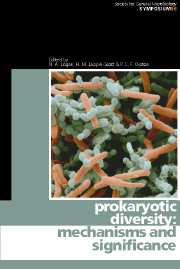Crossref Citations
This Book has been
cited by the following publications. This list is generated based on data provided by Crossref.
De Lourdes Moreno, María
Pérez, Dolores
García, María
and
Mellado, Encarnación
2013.
Halophilic Bacteria as a Source of Novel Hydrolytic Enzymes.
Life,
Vol. 3,
Issue. 1,
p.
38.
Tahrioui, Ali
Schwab, Melanie
Quesada, Emilia
and
Llamas, Inmaculada
2013.
Quorum Sensing in Some Representative Species of Halomonadaceae.
Life,
Vol. 3,
Issue. 1,
p.
260.
Corral, Paulina
Amoozegar, Mohammad A.
and
Ventosa, Antonio
2019.
Halophiles and Their Biomolecules: Recent Advances and Future Applications in Biomedicine.
Marine Drugs,
Vol. 18,
Issue. 1,
p.
33.
Torres, Marta
Dessaux, Yves
and
Llamas, Inmaculada
2019.
Saline Environments as a Source of Potential Quorum Sensing Disruptors to Control Bacterial Infections: A Review.
Marine Drugs,
Vol. 17,
Issue. 3,
p.
191.
Sánchez-Porro, Cristina
2023.
Special Issue “Halophilic Microorganisms”.
Microorganisms,
Vol. 11,
Issue. 3,
p.
690.
Straková, Dáša
Sánchez-Porro, Cristina
de la Haba, Rafael R.
and
Ventosa, Antonio
2024.
Decoding the Genomic Profile of the Halomicroarcula Genus: Comparative Analysis and Characterization of Two Novel Species.
Microorganisms,
Vol. 12,
Issue. 2,
p.
334.
Straková, Dáša
Sánchez-Porro, Cristina
de la Haba, Rafael R.
and
Ventosa, Antonio
2025.
Strategies of Environmental Adaptation in the Haloarchaeal Genera Haloarcula and Natrinema.
Microorganisms,
Vol. 13,
Issue. 4,
p.
761.



